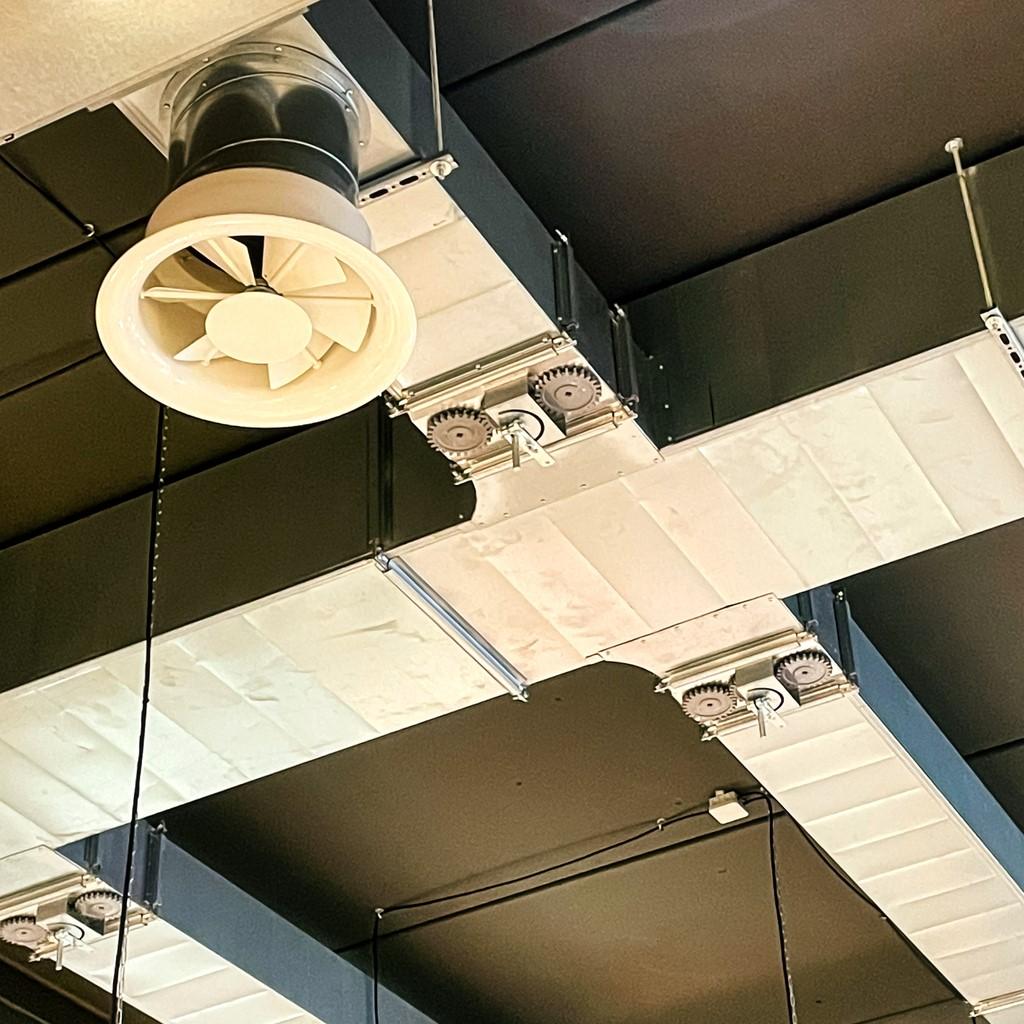[Editor's note: A correction was made in this story on Oct 30, 2023, to eliminate a quote misstating the standard's position on the use of ceiling fans. The standard doesn't specifically mention ceiling fans.]
The first-ever ASHRAE standard on reducing the risk of indoor infectious aerosol transmission sets new targets for building operators in terms of air system design, installation, operation, and maintenance.
But both ASHRAE and other experts acknowledge that buildings have not been designed to reduce disease transmission—only to heat, dehumidify, and cool both outdoor air and recirculated indoor air and address off-gassing of volatile organic compounds from people and building materials by diluting them—so compliance may require some heavy lifting.
"The requirements for filter and air cleaner testing incorporated in this standard go well beyond what is found in current standards," the authors wrote in the foreword. "They are a major step in the direction of creating uniform and effective technology-agnostic criteria for characterizing filter and air-cleaner performance and safety."
Tony Havics, a certified industrial hygienist and professional engineer in Indiana, said the standard offers some good guidance but doesn't include the assumptions, criteria, and processes used in its development. It also doesn't tailor its recommendations to specific pathogens or scenarios (ASHRAE didn't specify which virus or other variables they used for their estimation).
"How would you make a decision to manage something?" he asked. "If it was based off of COVID, and I've got measles, do I change my approach?"
ASHRAE, founded in 1894, is a global professional society dedicated to advancing heating, air conditioning, refrigeration, and related fields.
Introducing equivalent clean air flow
Earlier in the COVID-19 pandemic, the White House COVID-19 Response Team encouraged ASHRAE to develop Standard 241, the foreword said. The resulting document advises operators of new and existing buildings and those undergoing major renovations to take steps to reduce the average (not individual) risk of infection with SARS-CoV-2, influenza, and other airborne pathogens.
Rather than indoor-outdoor air exchanges per hour, the document describes an "equivalent clean air flow" target per occupant of pathogen-free air, which ASHRAE calls "a more useful and scalable way to represent requirements." The standard includes a calculator to estimate equivalent clean air flow and a table listing minimum equivalents in settings such as correctional and educational facilities, healthcare, industry, sports and entertainment spaces, and residential dwellings.
Air exchanges per hour are not necessarily better than equivalent clean air flow, Steven Welty, an airborne disease expert in Virginia and member of ASHRAE's Epidemic Task Force, told CIDRAP News. Air exchange is "a less-than-well understood phenomenon for controlling airborne disease transmission," he said. "It depends on how the air is being introduced and how it's being evacuated."
Max Sherman, PhD, of the University of Nottingham and vice chair of the standard committee, said in a podcast on 241 that the group spent considerable time developing the equivalent clean air flow measure. "What we did was combine absolute risk and relative risk and theoretical risk and probabilistic risk in a way that met certain criteria," he said. "For example, we wanted the risk in every space to be more or less the same."
To meet equivalent clean air flow targets, the standard requires outdoor-air exchange and/or the use of better-quality filtration and air cleaning technologies such as high-efficiency particulate air (HEPA) filters (including in-room air cleaners), air filters with a minimum efficiency reporting value (MERV) of at least 11, or ultraviolet (UV) lights to clean both outdoor and recirculated indoor air. The latter methods are more cost-effective and energy-efficient than outdoor/indoor air exchanges, Welty said.
"Outdoor air is very expensive to bring in, because you have to cool and dehumidify it in the summer and warm it in the winter," he said. "The critical thing that makes 241 a challenge is monitoring the people in the room to change the clean airflow rates. Empty rooms need to have a sensor to alert airflows changes, just like packed rooms need to have a sensor to do that."

_0.jpg)
.jpg)














